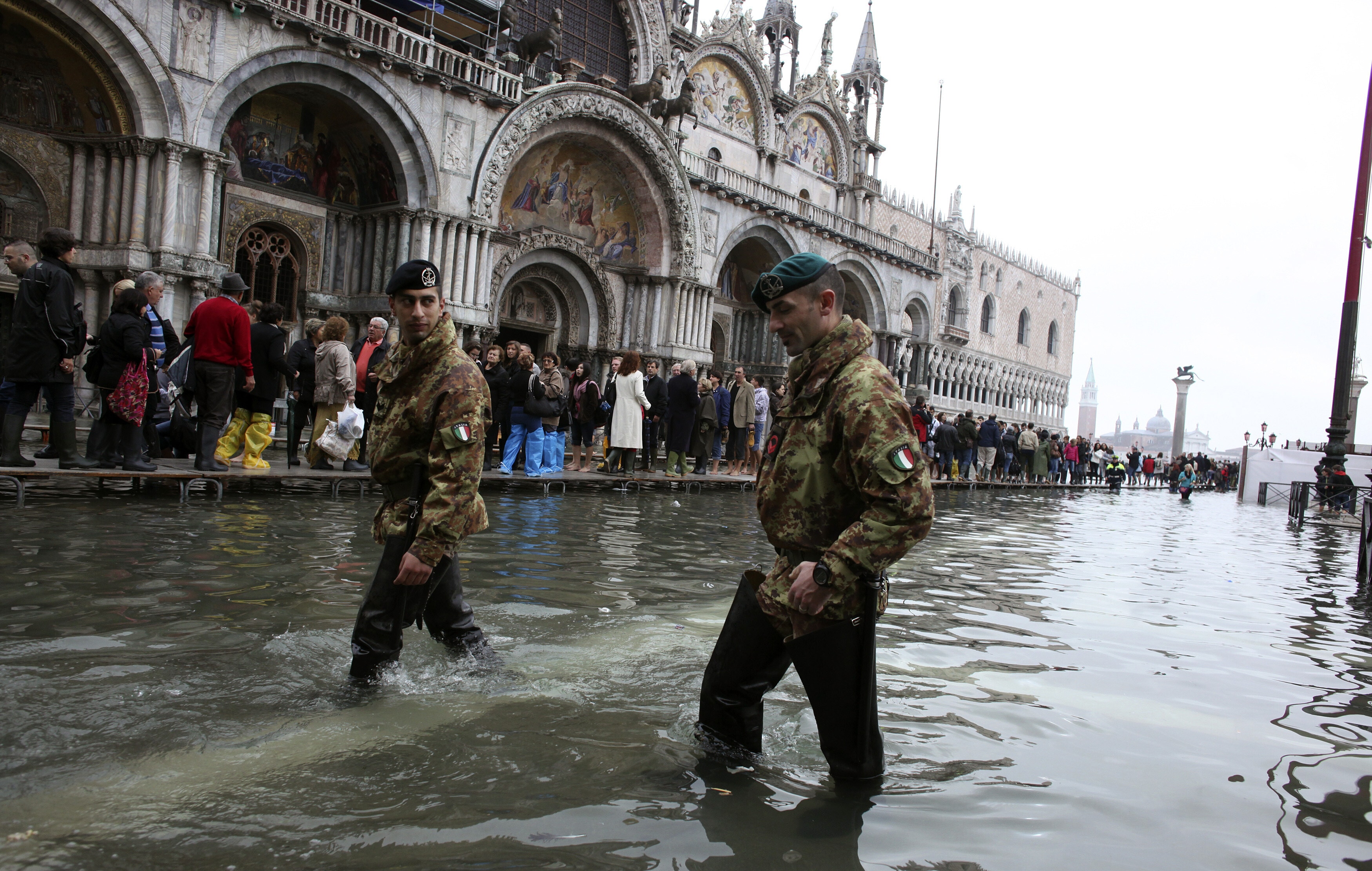This Glasgow nightclub uses dancers’ body heat to power venue

SWG3 nightclub in Glasgow are testing the BODYHEAT system to reduce carbon emissions.
Image: Michael Hunter
Stay up to date:
SDG 13: Climate Action
- A nightclub in Scotland is testing a system to trap body heat (thermal energy) and use it to heat and cool the complex.
- The thermal energy gets transferred to waters and piped deep underground into boreholes where that energy gets stored, much like a battery.
- SWG3 estimates that the project could save 70 tonnes of carbon emissions per year and become carbon neutral by 2025.
We've heard of wind, solar, thermal and tidal — but dance energy? Apparently, yes! Legendary nightclub SWG3 in Glasgow, Scotland will trial an innovative scheme to trap body heat from the dancers on its dance floor to heat and cool various parts of its complex.
Dubbed BODYHEAT, the system captures and converts human body heat created by staff and partiers inside the venue into a renewable energy source for the club to use, TimeOut reported. Importantly, the energy generated can also be stored for months until needed, long after the party is over.
This system will reduce SWG3's carbon footprint and allow SWG3 to operate more sustainably, reduce its carbon footprint and help in the fight against climate change.
SWG3's Operations Manager Bob Javaheri explained: "Heat is essentially thermal energy, and if you've ever found yourself in the middle of a packed out club night then you'll be well aware of just how much energy could be kicking around that room. [Traditionally, [w]hen you look to cool down those spaces using either air-conditioning or ventilation systems, you're pretty much pulling the heat out of a space and releasing it into the atmosphere."
With BODYHEAT, "[w]hat happens, in this case, is that instead of letting all that thermal energy just disappear into the night, it gets transferred to waters and piped deep underground into boreholes where that energy gets stored, much like a battery, to use at a later time," Javaheri explained to EcoWatch.
BODYHEAT is being pioneered by TownRock Energy, a company specializing in heat pump technology that reached out to SWG3 when its founder David Townsend heard that Scotland's leading arts venue was considering a green energy retrofit, Fast Company reported.
"The story is that . . . I like clubbing," Townsend told the news report with a laugh. "I've done a lot of clubbing." He saw the opportunity as a chance to combine his passions and develop a club-specific heat pump project.
What’s the World Economic Forum doing about climate change?
Heat pumps generally work by leveraging stable temperatures in underground rocks to balance out temperature fluctuations in buildings above the surface, Fast Company explained. Temperatures inside Earth's crust remain "relatively constant," so in the winter, colder air from a building gets pumped into the Earth to absorb heat from below. This then circulates back up to the building as warmer air. Once cooled, it continues back down to Earth in a cycle. In contrast, during summer, warmer air above ground pumps down to the cooler rocks below. The rocks absorb heat from the air, and cooler air returns back up to continue the cycle. The EPA shared a diagram of how this works.
SWG3 took this existing technology and added air collectors in its ceilings "to suck up the hot air put out by clubgoers on the floor," Fast Company reported. Other venues use these mechanisms to pipe hot air outside the building, but Townsend thought, "That wastes heat ... Why not capture it and use it? Otherwise, the heating is done by gas boilers."
BODYHEAT will send captured body heat up to 650 feet into the Earth, warming the surrounding rocks and cooling the club during parties. The rocks act like heat batteries, Fast Company explained, so during non-club times, when the building is used as an office or arts venue, that stored heat can be pumped back up from the rocks to warm the space.
These measures will allow for the club and music venue to operate more sustainably, and they're eliminating their traditional gas boilers completely, Townsend told Fast Company.
"This is the heating system for the venue," he said, noting that the body heat energy will be more than enough to warm the building during Glasgow's coldest months, which can average 40 degrees Fahrenheit.
The scheme is part of the UN-backed COP26 climate conference, which is slated to take place in Glasgow starting Oct. 31 of this year, Optimist Daily reported. As such, the Scottish city has been introducing a number of creative environmental initiatives and solutions to showcase what a more climate-friendly future might look like.
"The thing I love most about BODYHEAT is that it's all existing technology," Javaheri said. "Innovations aren't limited to inventing something new, and with so many conversations on a more sustainable future already happening in the city, I'm excited to see what else we'll be able to get off the ground by the end of it."
The goal of the international summit will be to bring parties together to accelerate action towards the goals of the Paris agreement and the UN Framework Convention on Climate Change, the COP26 website notes. As the host, the United Kingdom also shares its climate leadership actions on the page.
Currently finishing up their "radical [green] retrofit" to fully install BODYHEAT and sustainably-update other features, SWG3 will reopen on Nov. 7 during the climate change conference, TimeOut reported.
"BODYHEAT is our innovative contribution to a global issue, and will help us to dramatically decrease our energy consumption — bringing us one step closer to becoming a carbon neutral venue in the not so distant future," SWG3 Managing Director Andrew Fleming Brown said in a company statement.
Based on previous annual attendance figures, SWG3 estimates that the project could save 70 tonnes of carbon emissions per year, the statement said. This week, the club also announced its pledge to go Net Zero and to become carbon neutral by 2025 or sooner. According to its city council, Glasgow has city-wide aims of reaching Net Zero by 2030.
SWG3 hopes to "lead by example" to show other venues across the world to decarbonize. In its Net Zero pledge announcement, the venue offers to share its insights with all others looking to make similar sustainability shifts.
"We want to keep dancing, keep working, keep creating, keep inspiring ― but we also want to do this in a responsible, innovative way," the pledge said. "We know this won't be easy, but we know we have to try — and we're mad up for the challenge."
Accept our marketing cookies to access this content.
These cookies are currently disabled in your browser.
Don't miss any update on this topic
Create a free account and access your personalized content collection with our latest publications and analyses.
License and Republishing
World Economic Forum articles may be republished in accordance with the Creative Commons Attribution-NonCommercial-NoDerivatives 4.0 International Public License, and in accordance with our Terms of Use.
The views expressed in this article are those of the author alone and not the World Economic Forum.
Related topics:
Forum Stories newsletter
Bringing you weekly curated insights and analysis on the global issues that matter.
More on Climate ActionSee all
Hu Xiangdong and Felipe Carazo
August 1, 2025
Kate Whiting
July 31, 2025
Florian Krampe
July 31, 2025
Andrea Willige
July 30, 2025
Tom Crowfoot
July 30, 2025






